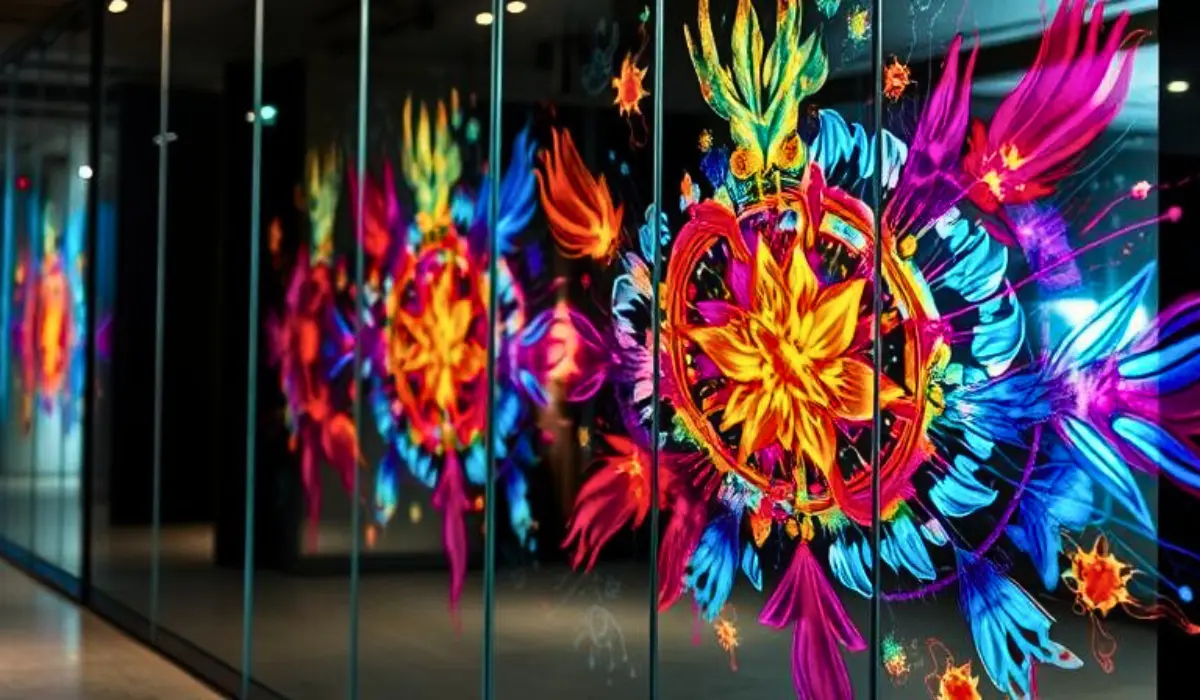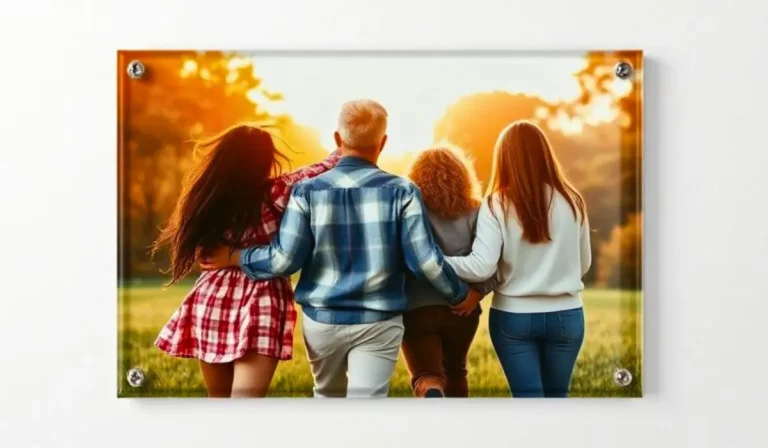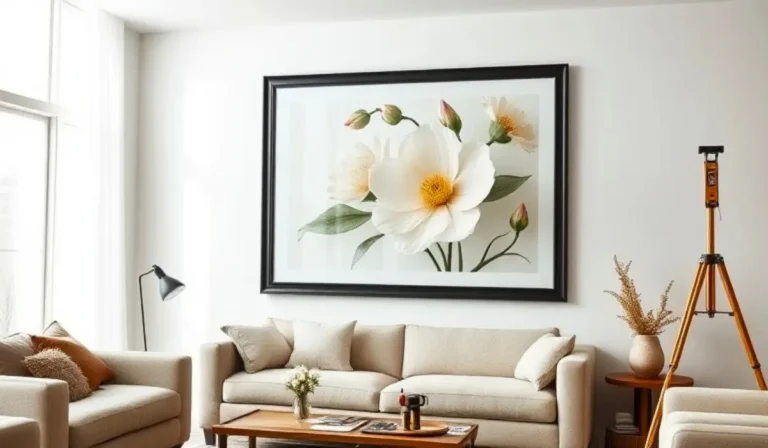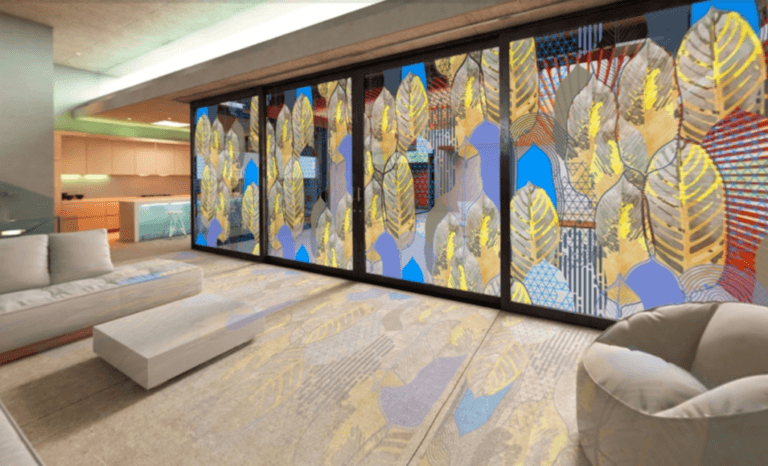Glass is no longer just for windows and tabletops. Today you’ll see crisp logos on shower screens, privacy patterns on office partitions, and vibrant art spanning hotel lobbies—so it’s natural to ask, how do they print on glass. The answer is a mix of smart surface prep, the right inks, and either room-temperature UV curing or high-heat firing to lock colors in place.
In this guide, you’ll learn the major methods, what happens step by step, how to choose the right technique for your space, and what to expect for care, cost, and timelines. Whether you’re planning a feature wall at home or signage for a retail fit-out, you’ll finish with a clear, practical understanding of modern glass printing.
The primary methods professionals print on glass

UV direct-to-glass printing
In UV direct-to-glass printing, tiny ink droplets are jetted directly on to glass and are cured immediately with UV-LED lamps. White ink is generally printed first so the colors can still be vibrant and readable even on clear glass or low-contrast surfaces. Adhesion promoters or primers are used to get the ink to bond to a non-porous surface. UV printing is suitable for high detail, fast turnaround, interior décor, signage, partitions, and art pieces where one-off or small batch custom components are required.
Digital ceramic (frit) printing
Within this section, we are looking at inks that contain ceramic pigments and glass frits. After we print the image, the panel is fired during the tempering process (around 600–700 °C); thus the image will infuse into the surface of the glass, which is impervious, UV stable, scratch resistant, and suitable for exterior façades, spandrel glass, railings, or anything requiring long term durability and abide by the building codes.
Screen printing with enamel inks
This process is best suited for applied bold graphics, such as logos, borders, or dotted patterns. A mesh stencil is used to apply a heavier layer of the ink, which is then fired in a kiln to achieve a tough uniform finish. This process is best suited for high volume applications and we limited number of colors.
From file to finished panel: the process in practice
Project scoping
Define use case, location, and performance needs. Indoor art and meeting-room glass may suit UV; exterior cladding or safety glass usually calls for ceramic.
Artwork preparation
Vector files or high-resolution images (usually 150–300 dpi at full size) are checked for scale, bleed, and readability. Designers plan opacity, gradients, and any see-through areas.
Color strategy and white ink
Because glass is clear, a white underprint is often added to make colors pop and to control translucency. Spot white can be placed selectively behind text or images while leaving other zones transparent.
Surface cleaning and priming
Glass is cleaned thoroughly to remove dust, silicone, and fingerprints. For UV, an adhesion promoter may be wiped or sprayed on, especially for high-touch areas.
Printing
A flatbed printer positions the panel, aligns the artwork, then lays down white, CMYK, and any special layers in sequence. Registration marks and jigs keep multiples consistent.
Curing or firing
UV prints harden instantly under UV-LED lamps and can be handled right away. Ceramic prints head to tempering or a kiln, where heat permanently fuses the ink with the glass.
Finishing and safety options
Edges can be polished; holes and cutouts for hardware are handled before tempering. For partitions or doors, laminating two lites with an interlayer adds safety, sound control, and optional privacy films.
Quality Assurance
Technicians check for color, adhesion, scratch-resistance, and dimensional accuracy before packing
Choosing the right method for your project
If you’re still wondering how do they print on glass for your exact needs, match the method to the environment and lifespan you want. UV printing shines for detailed art, quick custom runs, and interiors where tactile wear is moderate. Ceramic printing is the go-to for architectural performance: exteriors, harsh sun, cleaning chemicals, and decades-long durability. Screen printing bridges the gap when you need a solid, repeatable graphic at scale. Consider also visibility and light control—white layers, halftone patterns, and gradients can deliver privacy while keeping spaces bright.
Care, maintenance, and longevity tips
• Clean with non-abrasive glass cleaner and soft cloths. Avoid scouring pads.
• In high-traffic zones, choose ceramic or laminate UV prints behind an interlayer for extra protection.
• For exterior glass, verify UV stability and check any local building and safety requirements during specification.
Cost and lead times
Direct-to-glass UV printing is typically more cost-effective for one-off and small- to medium-sized runs with a relatively short lead time. Digital ceramic printing entails tempering and therefore has a higher cost per panel, but the value of longevity and conforming to architectural use pays for itself. Screen printing is cost-effective when printing large runs of the same artwork. The unique factors that will affect cost include the panel size and thickness, number of colors and white layers, edge work, laminating, cutouts for hardware, and installation in the field.
Conclusion
Whether you’re trying to figure out how they print on glass, it’s a simple answer now that you’ve seen the major methods and steps: either while laying down UV-curable inks directly onto clean glass for fast, precise printing with incredible detail, or fusing ceramic line and halftone patterns into the surface during tempering for permanent, architectural grade graphics.
Ultimately, it’s all about the context of where the glass will exist, how long it must be expected to last, and how much privacy or light you want to manage. You will need to consider the white underprint carefully, specify the finishing early, and work with a specialist who can exact the color match, guide you on safety glass, and coordinate the installation on your behalf. By doing the right prep work with the right process, printed glass can become a valuable design element that enhances spaces for years to come.




